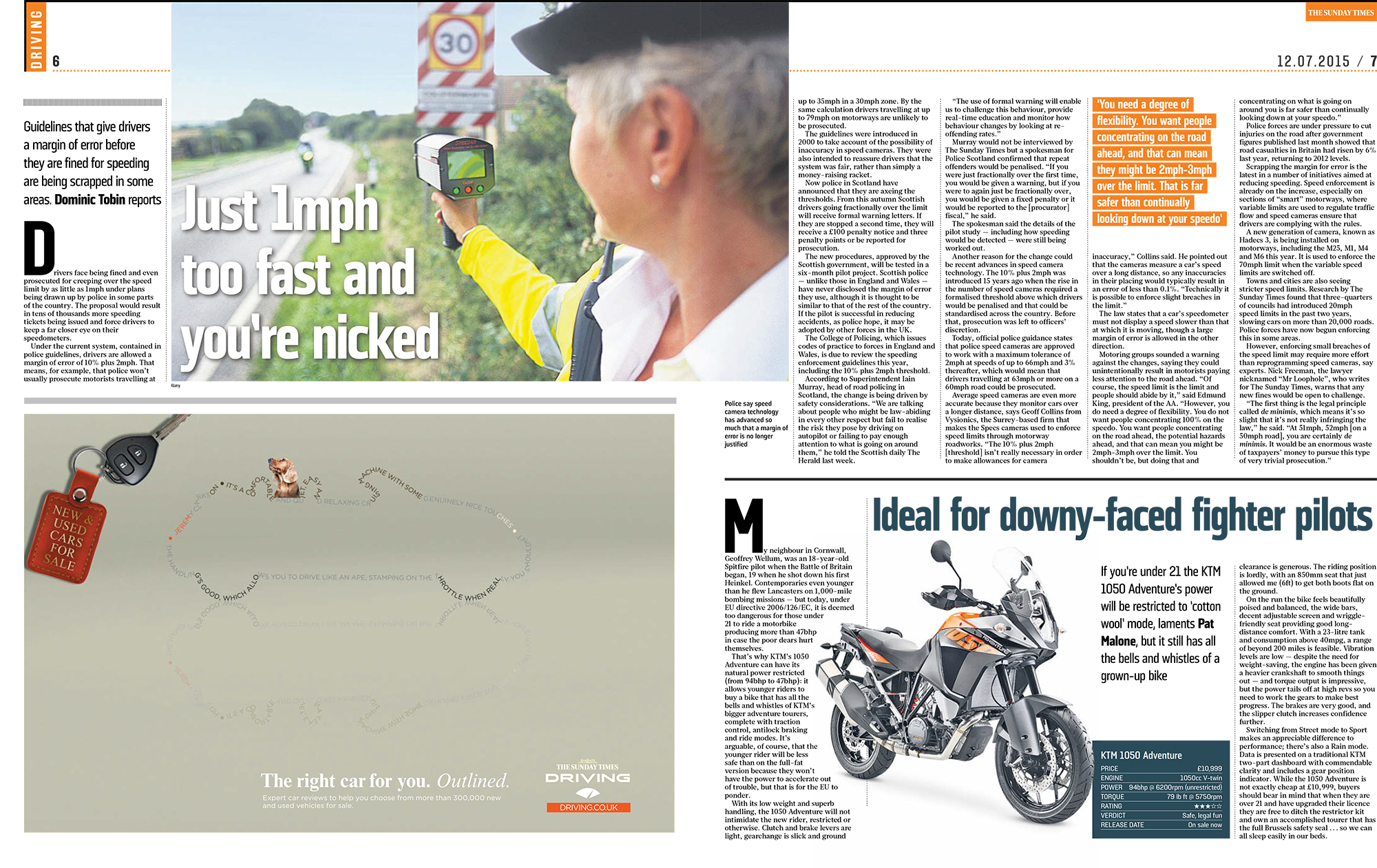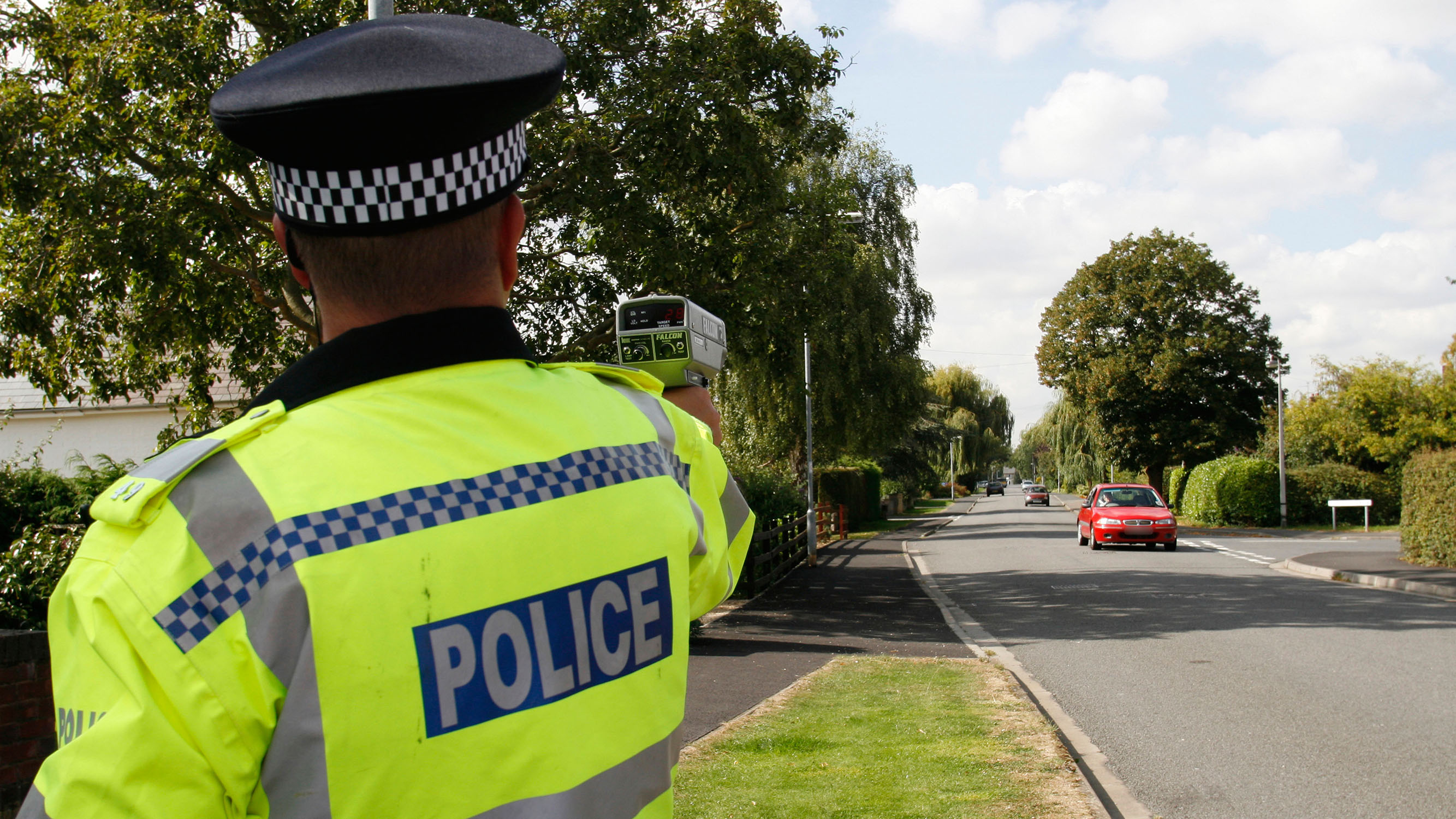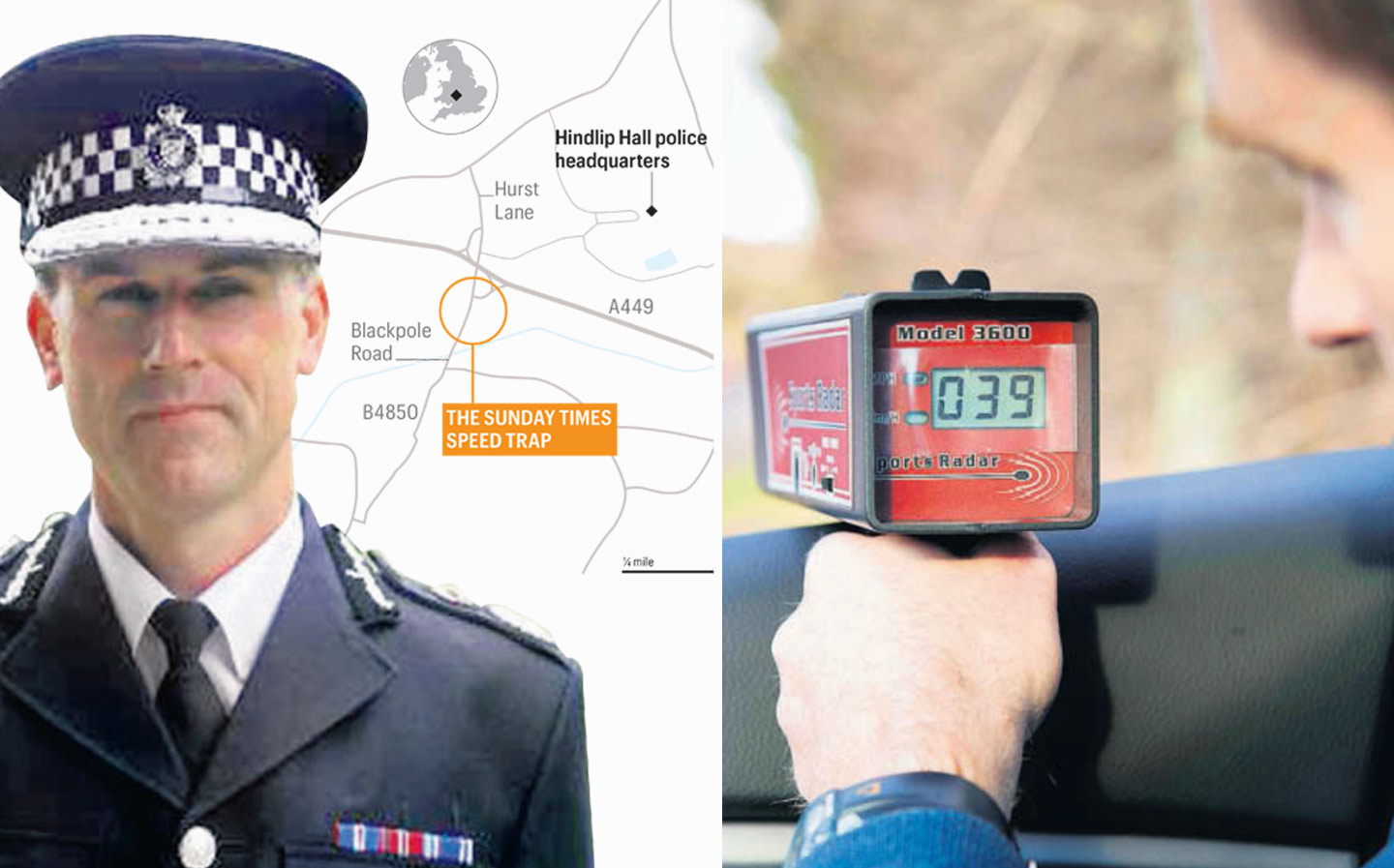Two cars a minute break speed limit outside zero tolerance police chief's HQ
A top officer wants fines for going even slightly too fast. So what happened when we set up a radar trap on his doorstep?
A POLICE chief branded “public enemy No 1” after proposing zero tolerance for speeding motorists may face a larger task than he imagined. A Sunday Times speed trap placed outside his headquarters caught more than 100 cars an hour breaking the 30mph limit.
Anthony Bangham, the chief constable of West Mercia police and spokesman on road policy for the National Police Chiefs’ Council, said a 10% “buffer” for speeding offences should be scrapped. He said police should be “proud” to be law enforcers — and uphold the speed limit whenever it was broken.
The effect would be to prosecute drivers who reach 31mph in urban areas. At present, many police forces follow national guidance to issue tickets only at “10% plus 2mph”, or 35mph.
Browse NEW or USED cars for sale
A Sunday Times car armed with an SR3600 hand-held radar gun found that Bangham might need to implement the policy on his own doorstep before advocating a national roll-out.
During one hour on the afternoon of Friday, February 2, outside Hindlip Hall on the outskirts of Worcester, Bangham’s police headquarters, 117 cars were clocked speeding. One, a black BMW estate, was travelling at 51mph. About one in four of the cars were travelling at between 31 and 35mph, and 14 cars at 40mph or faster.
The speed trap revealed the cash mountain that awaits if Bangham’s policy is implemented. Critics say it also shows his proposal is unworkable.
“You have to have a margin of error … cameras, speed guns and speedometers are not accurate enough to have zero tolerance”
Ian Taylor, of the Alliance of British Drivers, said the number of motorists caught in our 60-minute trap showed that police should focus on serious offenders rather than penalise all drivers.
He said: “It’s not realistic and I think it would be unenforceable. It is very easy to go 1mph or 2mph above the limit in a 30mph area.
“You have to have a margin of error for any technical instrument whether it is a camera, a speed gun or the speedometer in your car. They are not accurate enough to have zero tolerance.”

The Sunday Times Driving reported on similar plans for zero tolerance speed limits in 2015 – click the image to read the article on driving.co.uk
The trap was set in a 30mph zone on one of the main roads — called Hurst Lane and then Blackpole Road — that form a perimeter to the Hindlip Hall estate. The hall is one of the most historic police headquarters in the country. Dating from the 16th century, it was a hideout for some members of the Gunpowder Plot.
Visitors who turn out of the estate from its west entrance face a 40mph limit which then turns into a 30mph zone. Drivers were clocked at least 100 metres into the 30mph limit.
The results from our informal speed trap match other data. Last year the Safer Roads Partnership operated by West Mercia and Warwickshire police revealed that on the B4399, in the Herefordshire village of Holme Lacy, one of the villages neighbouring the one in which the chief constable himself lives, more than half of drivers were exceeding the 30mph limit and 15% were travelling above 36.5mph.
“Motorists were actually driving at the people on the side of the road with the speed guns”
On the B4349 in the Herefordshire village of Clehonger, more than 60% of drivers were exceeding the 30mph limit and 15% were travelling above 39.9mph. And on the A417 in Stretton Grandison, nearly 70% of drivers were exceeding 30mph and 15% were travelling above 39.4mph.
Christina Harris, a parish councillor who lives in a bungalow on the B4399 in Holme Lacy, said the 30mph road was used as a “rat run” to avoid Hereford, and speeding was a problem.
When villagers used radar guns to slow drivers down, it was not a positive experience. “Motorists were actually driving at the people on the side of the road with the speed guns,” she said.
Browse NEW or USED cars for sale
She said the village now had the support of the Safer Roads Partnership, with automatic speed indicators at each end of the village. “It’s helped a little bit, but you still get the odd maniac.”
Despite the problems suffered by the village, Harris did not support Bangham’s proposal for zero tolerance. “It’s the drivers who pay no attention whatsoever, and even when they see people walking with children don’t slow down — those are the drivers who need to be targeted.”
Bangham said in a statement to the Sunday Times that his comment had been misinterpreted to suggest he wanted to penalise offenders who were just 1mph over the limit. He said this was neither “proportionate or achievable”, adding: “But I want drivers to understand the limit is there for a reason. They should not assume there is a free pass at any level over the limit.”
Dashing into danger: speeding statistics
- The fastest speed registered in a 30mph zone last year was in Dundee, where a driver was clocked at 106mph. A driver in West Yorkshire was clocked at 160mph in a 70mph zone.
- West Yorkshire is Britain’s speeding capital — motorists there racked up more than 142,000 offences in 2017, up 13% on 2016. West Mercia had the third-highest figure: 62,503.
- 1.97m fixed-penalty notices were issued for speeding in England and Wales in 2016 — up 25,000 compared to 2015.
- 1.18m people went on a speed awareness course in the UK in 2016. The average cost of a course is £88.90.
- Drivers caught breaking the limit by more than 20mph in a 20mph or 30mph zone face fines of between 125% and 175% of their weekly income. The maximum fine is £1,000 on normal roads and £2,500 on motorways.
- Breaking the speed limit or driving too fast for conditions were factors in crashes that caused 17,832 casualties in 2016.
Jon Ungoed-Thomas
This article first appeared in the main section of The Sunday Times
Anger at police chief Anthony Bangham’s plan to fine 1mph speeders
Letters to the editor: readers respond

Speeding means revenue; they don’t want it stopped
As a motorist of more than 50 years’ standing, I read Jon Ungoed-Thomas’s article with interest but also some cynicism (“Two cars a minute break speed limit outside police chief’s HQ”, News, last week).
Modern production cars have performance levels once only shown by racing cars: in last week’s Sunday Times Magazine you reviewed a car capable of 0-60 in under 6 seconds, with a top speed of 155mph. The average car in the 1960s had 0-60 times in the 15-20 second range and top speeds around the 70mph mark.
Now, speed limits have been enhanced, detection fine-tuned and automatic fines issued by the thousand. Yet the performance of cars, unlike that of lorries or coaches, has never been restricted. If road safety were really the priority, then all cars could easily be limited to a maximum speed. The advent of sat-nav systems means that could also be made variable, according to the speed restriction on the road. The police could then focus on other miscreants, and motorists would no longer face the roulette of fines and points.
The government receives revenue amounting to millions of pounds from the fines imposed. Sadly, this is the sole reason nothing will change. This starts to look like a tax on motorists concealed under a cloak of road safety.
Dr Don Shapland, Bristol
Limited tolerance
There is a fundamental reason why the “1mph tolerance” proposal from the chief constable of West Mercia police, Anthony Bangham, is pie in the sky. Ask yourself this: “Can I drive my car to a tolerance of 1mph?” I suggest the response would be 100% “No”.
Thompson Hewitt, Kendal, Cumbria
Pursue the speed demons
The government’s 2016 vehicle speed compliance statistics show that 81% of motorists exceed the speed limit in 20mph zones, yet only 15% exceed it by 10mph. They are the ones to catch, not the vast majority of law-abiding drivers who inadvertently stray over the limit, which is incredibly easy to do in a 20mph zone.
Robert Horner, Surrey
Quick temper
I set my car’s speed limiter to 20mph to drive down a local road with that limit. I was tailgated, hooted at and had lights flashed at me. A lot of anger, all for obeying the law. In my 10 years in the southwest of England, I’ve seen three speed traps. Speeding is endemic. This officer may talk about zero tolerance, but what’s the point if it’s never enforced?
Tony Endless, by email
This article first appeared in the Sunday Times comment section





